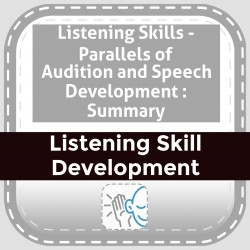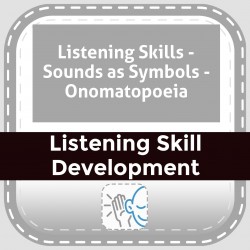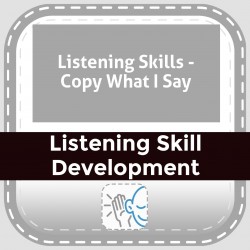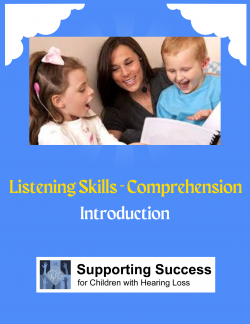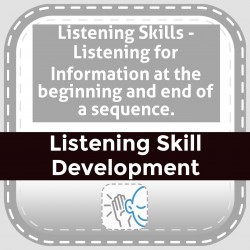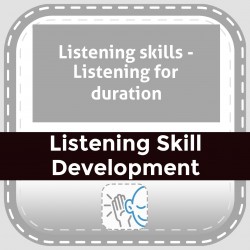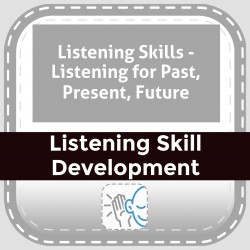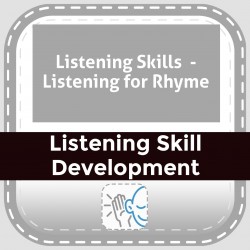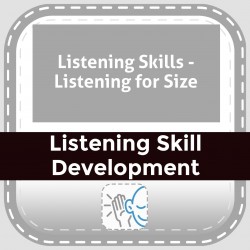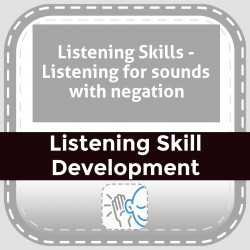Ability Levels
Categories
Resource Types
Age/Grade Range
CCSS
Anchor Standard
Speaking & Listening
Language
Reading
Listening Skills - Parallels of Audition and Speech Development : Summary
$ 0
This informative chart includes the developmental parallels between audition and speech.
Listening Skills - Sounds as Symbols - Onomatopoeia
$ 195
These instructional strategies and activities address sound words or onomatopoeia. Words are used in literature to more precisely describe sounds such as human voices, animal noises, and environmental
...
sounds. Consider the differences in a growl and a hiss; a giggle and a belch; a splash and a spray; a clang and a thud. You will find strategies for teaching such words and a sound bingo game that can be used with beginning and more advanced listeners.
Listening Skills - Copy What I Say
$ 195
Listening and following directions are important skills that require practice. Activities for listening accuracy include Copy what I Say which will help to reveal listening strengths and needs and f
...
ollowing precise directions to create a picture.
Listening Skills - comprehension (Introduction)
$ 295
Listening comprehension is more than just hearing a sound or what is said. It is the understanding of the message. This includes awareness of the meaning and language structure of the words used as we
...
ll as the meaning derived from tone of voice, phrasing, rhythm, and inflection. Good listening comprehension is important for reading comprehension and for verbal and written expression of thoughts and feelings. Activities include Listen and Do, Listen and Use, prediction, labeling, and listening for details.
Listening Skills - Listening for Information at the beginning and end of a sequence.
$ 2
Use vocabulary that is age and language appropriate for the child. Begin with one syllable words and a total sequence of 4 items. Once the child has 100% for 10 sequence sets, consider adding several
...
2 syllable words. If that is mastered, increase the number to 5 items in the sequence. For older students, use specific names of items such as birds – robin, cardinal, seagull, crow.
Listening skills - Listening for duration
$ 0
Duration, in the context of listening, consists of an awareness of the length of sounds. Duration awareness impacts every aspect of listening. These instructional strategies include ways to support d
...
uration awareness.
Listening Skills - Listening for Past, Present, Future
$ 195
In reality, time is a recognition of order, duration, and pattern. It is an important part of the executive functioning skills of planning and prioritizing. As a child ages, the cognitive skills neede
...
d to conceptualize time move from an awareness of ‘now and not now’ to an understanding of past, present, and future. These instructional strategies include matching correct spoken sentence with picture; using a three section calendar for past,present, and future associations; and using verb tenses for clarity.
Listening Skills - Listening for Rhyme
$ 195
Rhyming is a skill that is sometimes difficult for students with hearing loss. These simple activities include listening for rhyme, creating rhyming words, and increasing difficulty from 1 to 2 syllab
...
le rhyming words.
Listening Skills - Listening for Size
$ 195
In these activities, students are listening for and determining size. Worksheets include activities for size recognition (Will it fit?); analogy; and listen and act it out.
Listening Skills - Listening for sounds with negation
$ 0
These activities stress critical listening. Included are activities for recognizing two elements as the same or not the same; listening for sounds in a word or phrase; identifying the number of sylla
...
bles in a word,; and listening for accuracy.
 Your browser is out of date. For best experience switch to latest updated Browser.
Your browser is out of date. For best experience switch to latest updated Browser.
 Get Chrome
Get Chrome Get Edge
Get Edge Get Firefox
Get Firefox